Post 5: Where to open an office in Latin America

When expanding your business to a new market, we have to consider many factors - from the cost of labor to the cultural and linguistic differences. But where should you focus your energy when expanding to Latin America? Which countries offer the best opportunities for startups and tech companies? In this blog post, we'll analyze data with R skills to help answer these questions. We'll look at GDP growth, internet penetration, and other factors that can influence your decision on where to open an office in Latin America.
Latin America is an attractive area for business. It has a population of about 668 million people, a young population and is in the same time zone as USA and Canada. However, since countries in Latin America do not have a consistent data reporting system. This makes it difficult to find accurate and up-to-date information for this particular project. With a little effort I found information and it is possible to consolidate the information we need.

Now that we have the GDP, internet penetration rate, poverty level amount others metrics for every country in our data set, it is time to visualize this information and start analyzing where to open an office.
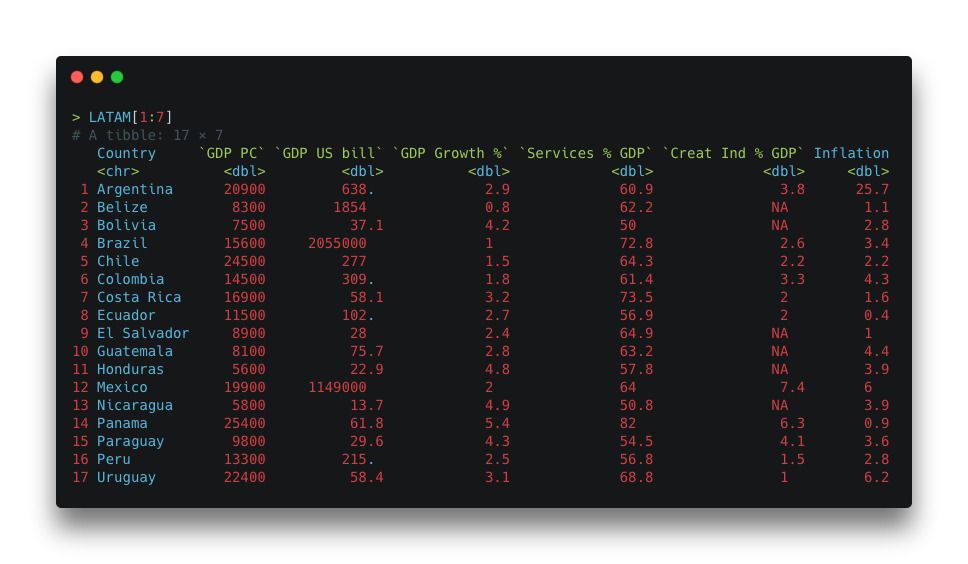
The economy in a country can have an immense impact on the health and wellness of its people. There are many factors that go into this, but one major component is gross domestic product per capita (GDP). By looking at which countries have high GDPs we get insight as to where some Latin American economies may be doing better than others. LATAM countries have a wide range of GDP per capita, making it difficult to compare so I decide focus on economies with hagiest GDPs.
The average gross domestic product per capita across the region was $10k. However, there's quite a difference when we look at who topping each list: while Brazil($15600), Chile($24,500)and Mexico ($19,900) stand out among. (Here we realize the inequality in the region).
Since this research is for tech and startUp companies I found important to check the internet penetration in countries in LATAM. This will give us a perspective where there is a solid infrastructure to distribute a digital service. Furthermore, I found it relevant to check the inversment in education respect to the contrie's GDP, I beleve it allows a company access high skill workers and also education raise productivity as well as stimulate technological breakthroughts.
For the above reason I query which countries has internet penetration of more than 80% with an investment in education of more than 4.5 with respect to its GDP.
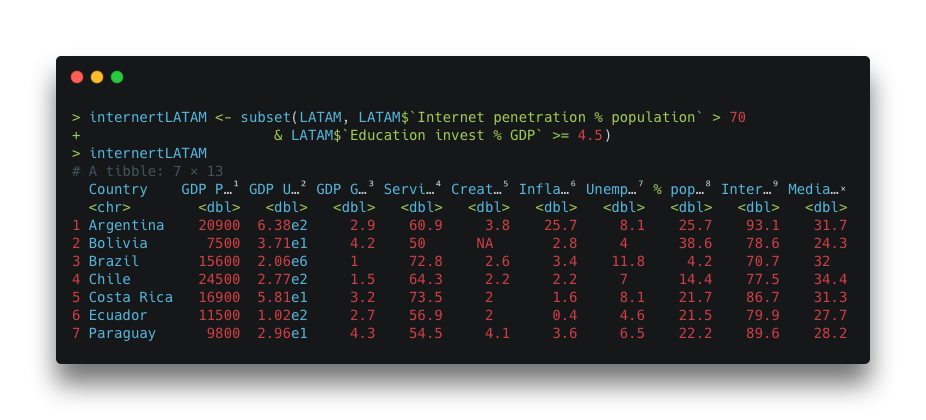
Costa Rica is the most attractive country in terms of internet penetration (86%) and education (7% of its GDP) followed by Chile (internet penetratio : 77.5% education:4.9% of its GDP) and Brazil (internet penetratio : 70.7% education:5.9% of its GDP). The reason why I discard Argentina although its has a 93% internet penetration is because of its inflation of 25.7 that its shown in the results.
One way to make our argument more compelling is by presenting the data in a format that board members and executives can easily understand (I know reading tables with numbers might be boring). I created this histogram, which shows the internet access in Latin America.
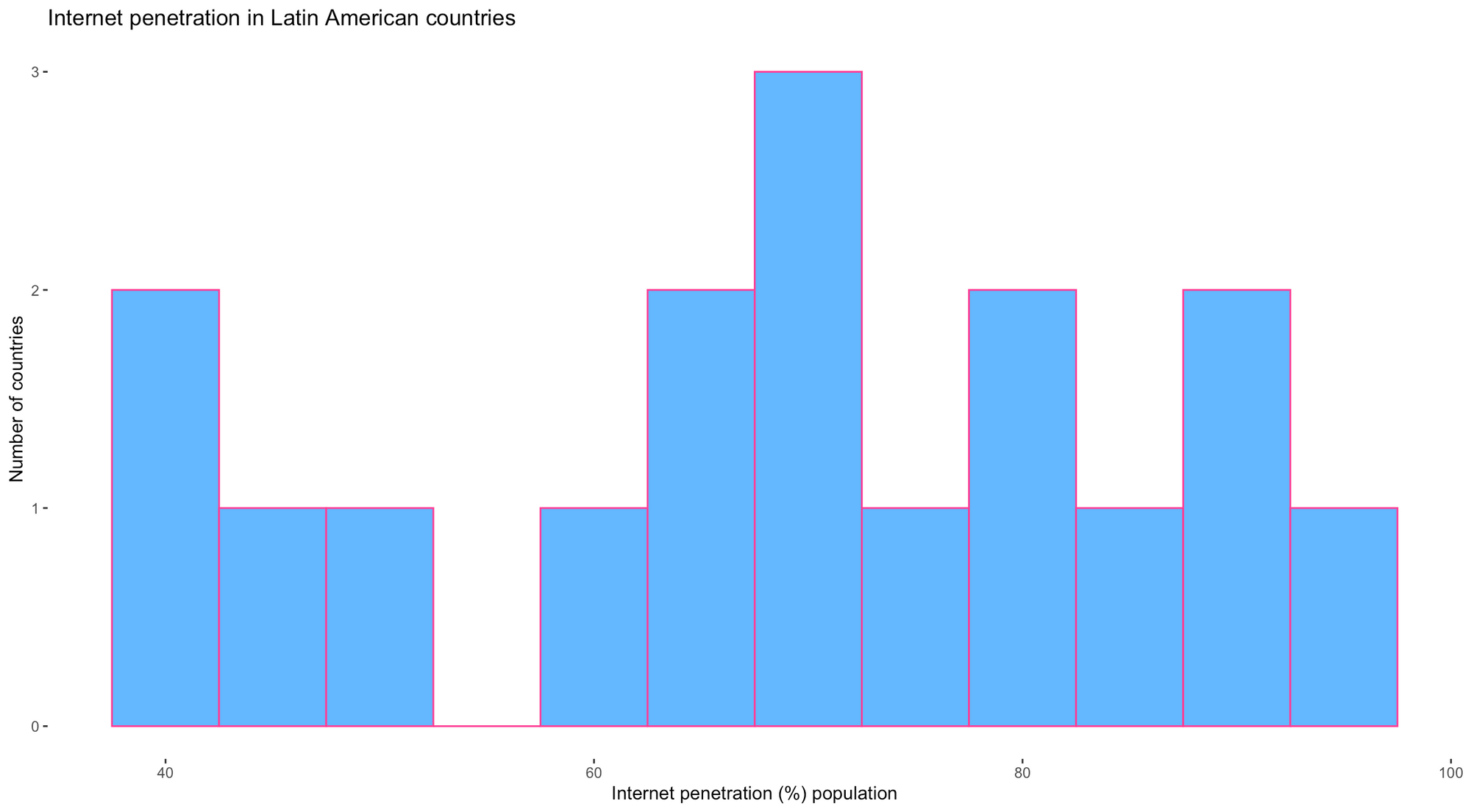
According to the data, it can be seen that the majority of countries have an internet penetration of between 60 and 70%. However, only 6 countries have an internet penetration of more than 80%. This data is important for businesses to consider when deciding how to allocate their resources. By understanding the internet penetration in LATAM, businesses can make more informed decisions about where to invest their time and money.
Now that we know the internet penetration we can analyze how the creactive industries are impacting the GPD (Tech companies report to this industy in LATAM). For this we can do a bloxplot so we can know the dispersion of how those industries are impacting the region.
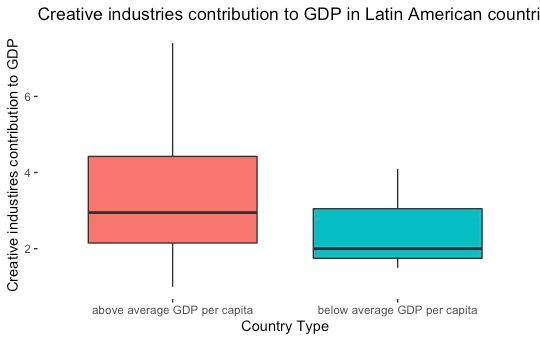
The bloxplot indicates that countries with low GDP per capita tend to contribute more equally than those above the average. The blue areas show a high degree of homogeneity, which suggests these economies rely on similar industries for their success; whereas red zones demonstrate greater dispersion in terms contribution from Creative Industries across the region.
This was just one example out many other interesting trends we could explore. Since our dataset allows us to visualize how the internet penetration and contribution of the creative industries impact the GPD of a country so we can visualize it as follow:
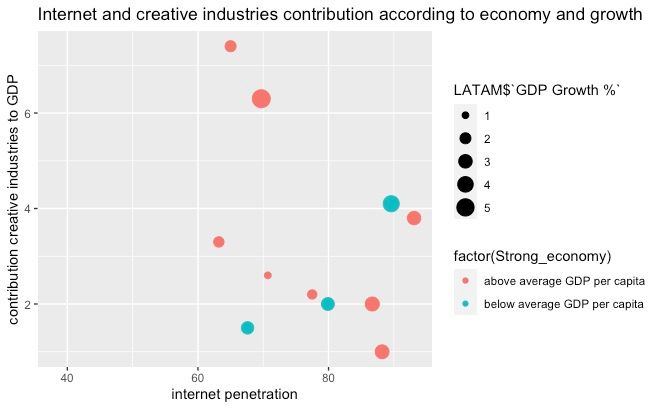
We can see that as countries become more connected to the Internet, their GDPs grow. The size of a country's economy is positively impacted by creative industries and internet penetration; this means economic growth in those areas will lead not only for increases within each individual nation but also internationally too!
After checking variables correlation. The data seems to show that there is a relationship between age and GDP. To validate our assumptions, we will check each variable's correlation with economic growth rates; if they are not significant then it means something else must be causing or influencing this trend (such as environmental factors).
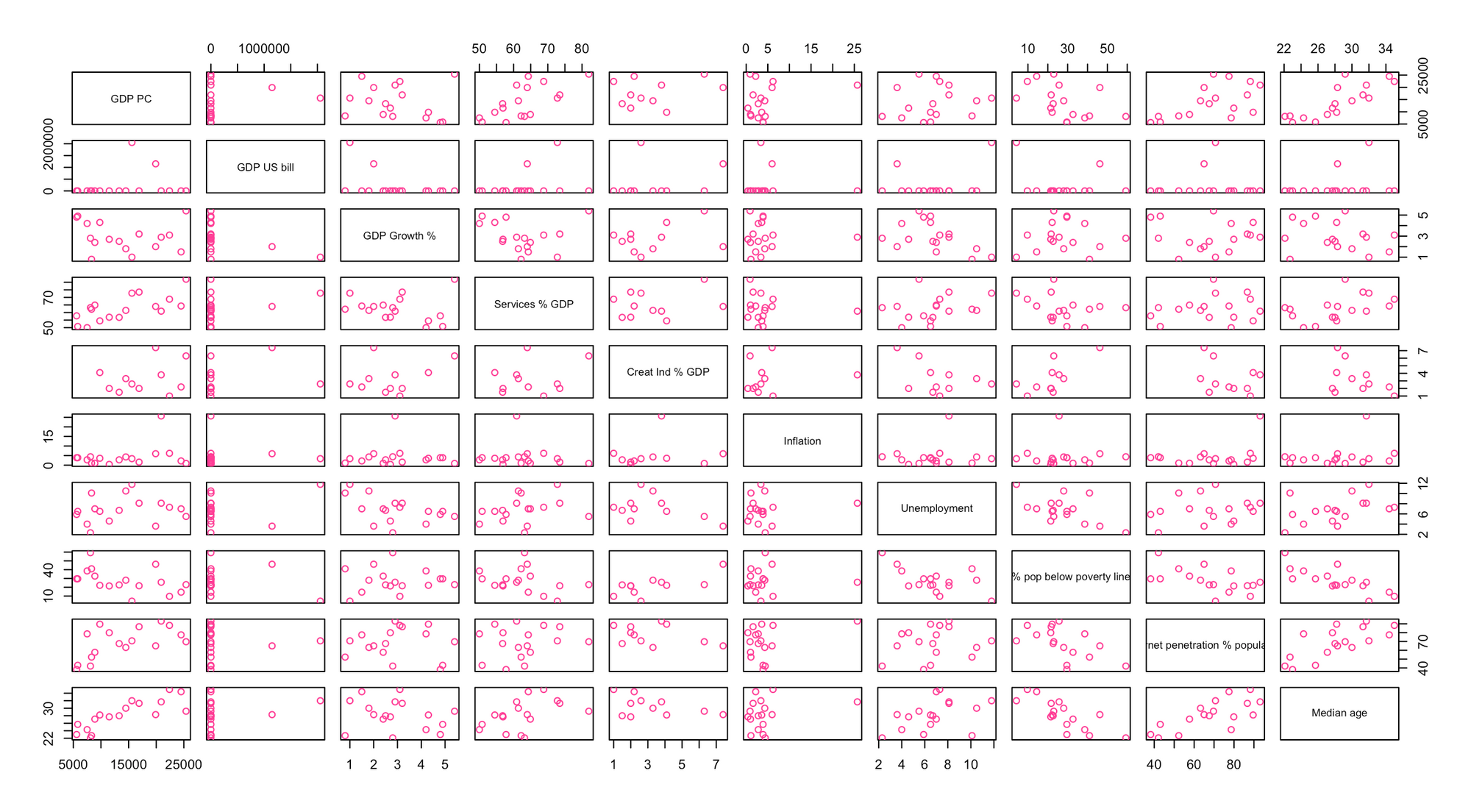
We wanted to see if our last visualization was correct for latin american counties, so we validated the relationship between GDP.PC and average age. It turns out that there's a positive correlation!
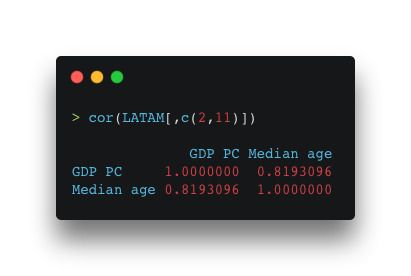
Now that we have found a relationship between middle age and GDP with 81% accuracy rate, it is only logical to continue on with this line of inquiry and graph it to see visually how this is true across Latin American countries.
The mean age of each country will be shown on the x- axes and and its GDP in the y-axes, respectively. The older the population of a country, the higher its GDP tends to be. This makes perfect sense when you think about it; countries with an older population have had more time to develop their economies and create wealth.
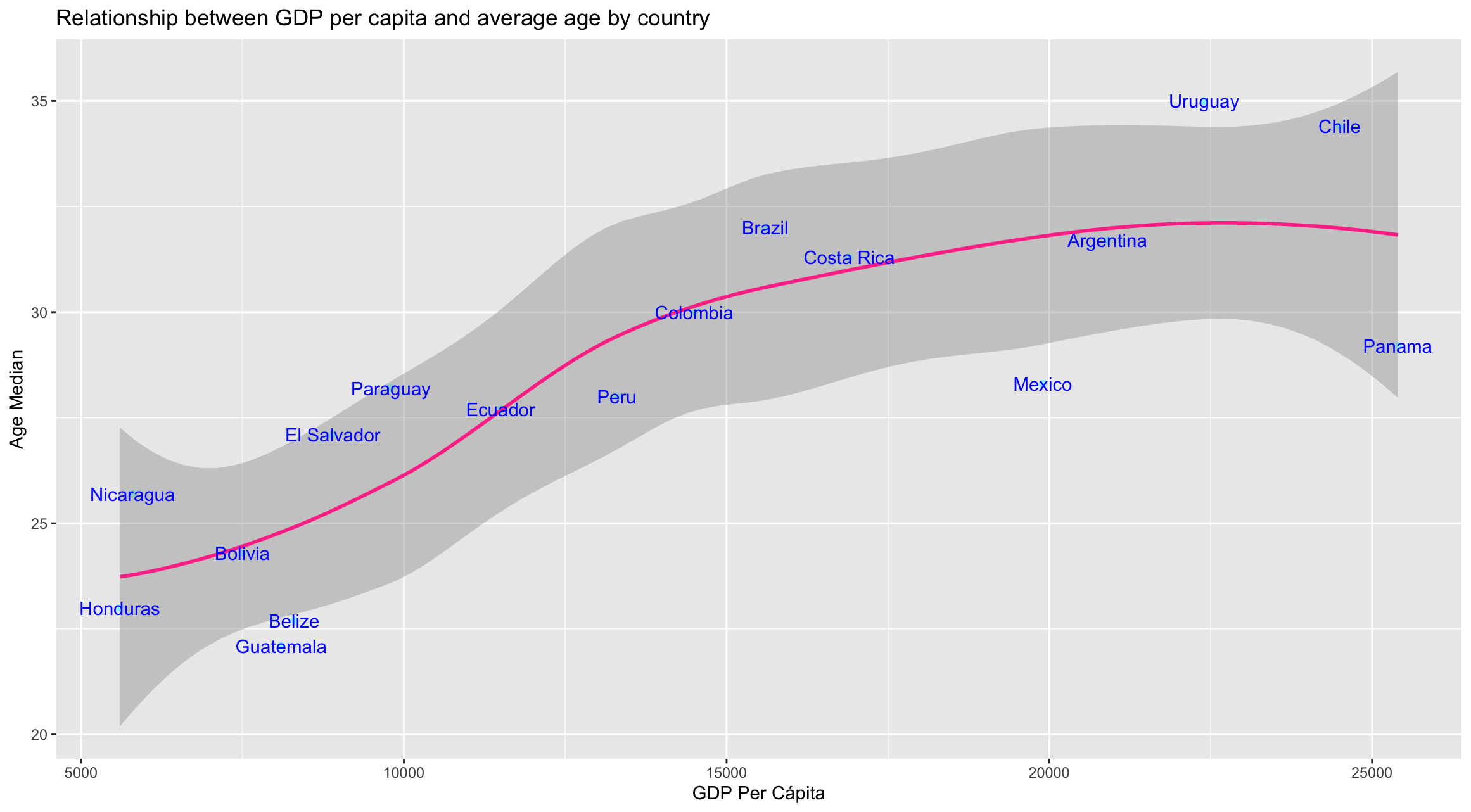
As the average age of a population increases, so does its GDP.PC. The older the population of a country in LATAM, the higher its GDP tends to be. This makes perfect sense when you think about it; countries with an older population have had more time to develop their economies and create wealth.
In conclution, when considering expanding your business into Latin America, there are a number of factors to consider. While each country has its own unique set of strengths and weaknesses, Chile, Brazil, and Costa Rica are all attractive options for businesses looking to establish a presence in the region.
One key factor to consider is internet penetration. All three countries have relatively high levels of internet access (higher than 70%), making them good markets for companies that rely heavily on online sales or customer engagement. Additionally, all three countries have been experiencing strong economic growth in recent years, meaning there is an expanding base of potential customers with disposable income.
Finally, another important factor to consider is education levels. In all three countries, the percentage of the population with a tertiary education is significantly higher than the global average (higher than 5%). This means that businesses will have access to a well-educated workforce when expanding into these markets.






